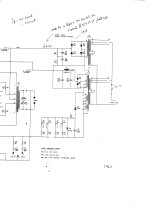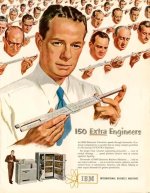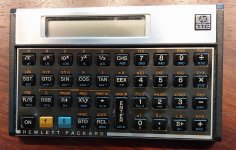Hi,
About 3 years ago I built an amp based on a Champ using parts from an old unidentified amp. It has recently developed a constant hum, regardless of the volume position. Its not really loud, but since it used to be really quiet, I want to figure out the reason. When building it, I used new good quality capacitors, but some resistors I did recycle, as well as the tubes that came with the amp. Before I open it up, I'd like to ask if there are points I should check with a volt meter to help find the reason for the noise. I've attached the schematic. Some resistor values have changed, and noted, but the updated schematics are inside the amp.
Thanks
About 3 years ago I built an amp based on a Champ using parts from an old unidentified amp. It has recently developed a constant hum, regardless of the volume position. Its not really loud, but since it used to be really quiet, I want to figure out the reason. When building it, I used new good quality capacitors, but some resistors I did recycle, as well as the tubes that came with the amp. Before I open it up, I'd like to ask if there are points I should check with a volt meter to help find the reason for the noise. I've attached the schematic. Some resistor values have changed, and noted, but the updated schematics are inside the amp.
Thanks
Attachments
Last edited:
Check your HT supply. Set your DMM to AC volts and measure the ripple of the DC HT/B+. If over a few volts check your reservoir & smoothing caps for leakage. So in other words suspect your caps.
Andy.
Andy.
1. Please, Please . . . If you start a Guitar Amplifier Thread on Tubes/Valves . . .
Then ADD the words "Guitar Amplifier" in your Thread title.
Thanks!
2. Note: Your attachment is Not a schematic. It Is a wiring diagram (but at least it is a Very Neat one; my compliments to you).
Then ADD the words "Guitar Amplifier" in your Thread title.
Thanks!
2. Note: Your attachment is Not a schematic. It Is a wiring diagram (but at least it is a Very Neat one; my compliments to you).
Its just an amp, nothing more, nothing less & straight forward at that.🙂Please, if you start a Guitar Amplifier Thread on Tubes/Valves . . .
Then ADD the words "Guitar Amplifier" in your Thread title.
jhstewart9,
You are absolutely correct.
. . . But . . .
I am not knowledgeable of Guitar Amplifiers, I do not know all of them by name.
Sometimes I read several Posts down before I discover that a thread that is posted on Tubes/Valves is for a Guitar Amplifier.
I am just about ready to start posting all of my Hi Fi and Stereo amplifiers, tube types, parts questions on the Instruments and Amps Threads.
Is that a good practice?
Is it courteous?
Can I even find very many knowledgeable Guitar Amplifier specialists who know all about Hi Fi Stereo amplifiers on Instruments and Amps?
Just asking for some friendly feedback,
and asking for slightly more detailed and accurate thread titles.
A lot of the Hi Fi and Stereo amplifiers on Tubes/Valves, are guilty of Misleading or non descriptive thread titles as well.
. . . Both parties are guilty.
Just my 78 year old meanness coming through on these threads.
You are absolutely correct.
. . . But . . .
I am not knowledgeable of Guitar Amplifiers, I do not know all of them by name.
Sometimes I read several Posts down before I discover that a thread that is posted on Tubes/Valves is for a Guitar Amplifier.
I am just about ready to start posting all of my Hi Fi and Stereo amplifiers, tube types, parts questions on the Instruments and Amps Threads.
Is that a good practice?
Is it courteous?
Can I even find very many knowledgeable Guitar Amplifier specialists who know all about Hi Fi Stereo amplifiers on Instruments and Amps?
Just asking for some friendly feedback,
and asking for slightly more detailed and accurate thread titles.
A lot of the Hi Fi and Stereo amplifiers on Tubes/Valves, are guilty of Misleading or non descriptive thread titles as well.
. . . Both parties are guilty.
Just my 78 year old meanness coming through on these threads.
Last edited:
Ohms Law still applies. And the Fourier Series works.I am not knowledgeable of Guitar Amplifiers, I do not know all of them by name.
If the results don't look right we can still apply Cookes Variable Constant.
On the way thru it worked for me!😀
That would be entertaining. Lets have a look at the hard evidence of all the advice you pass out.I am just about ready to start posting all of my Hi Fi and Stereo amplifiers, tube types, parts questions on the Instruments and Amps Threads.
I've only ever seen two examples, as a former instructor I would have to award you a fail on those.😱
As Andy the Diabolical has said the first cap in the Power supply might be defective.
A quick & easy test is simply connecting a known good cap across the suspected cap with clip leads.
If the hum goes away you have identified the problem,👍
A quick & easy test is simply connecting a known good cap across the suspected cap with clip leads.
If the hum goes away you have identified the problem,👍
Power supply defective.....a warm reminder of the past. Some of us might remember power amp tube designs around mid 1965 were in a little flux as transistor amp types were making noises in the HiFi and general market place. The first casualty for tube amps was power supply revision. The indirect heated GZxx rects and others were often substituted with the early HV stud silicon and they failed, often taking out the short life smoothing caps. See enclosed circuit example in prolific use around 1967. I dread what computer simulation would declare. Having repaired one of these amps rated at 100W+100W fitted with KT88´s, the switch on power surge tripped my switchboard fuse. One got around that problem by running the amp from a long lossy extension lead and have spare fuses. Hardy an amicable solution.
However, directly related;
Another post mentioned cathode stripping; yes, the enclosed circuit would be nasty with DHT tubes, but notice 650V on switch on, falling to 600V on load, a nice reception for whatever cathode indirectly heated or not. My AC mains varies from 225 to 240V so more surge problems appearing. What a dreadful way of doing things, but who cared those days, it was only sales.
The designer of this amp quoted a tube life of 10 years (phew!) with MOV tubes at an undefined duty cycle. At that period the hard glass CRT B/W 405 line TV set was lucky to function anywhere half that time without being clouted.
Any method of reducing all this brutality on running tubes in our late days is worth every grain. Soft start, whatever configuration, do it.
Morgan Jones has only minimally treated the PSU issue in his books. In retirement, previously as a microwave/switchmode power designer, the technologies offer enormous benefits, but there are knowhow caveats, one being switchmode is a shunned topic in traditional tube designs and yet sound mixing silicon desks are full of passing Beethoven´s greats through it.
6A3summer
Designers who can cross both divides of tube MI amps and HiFi ones ? This one goes back nearly 30 years, the example of Randall Smith´s Mesa Boogie story, the Baron amp that fulfills both requirements. Indeed, his amps do sound good, and he has done the blend extremely well. https://legacy.mesaboogie.com/support/out-of-production/the-baron.html
There is no affiliation with my domain name.
Viva Tubes!
rJ
However, directly related;
Another post mentioned cathode stripping; yes, the enclosed circuit would be nasty with DHT tubes, but notice 650V on switch on, falling to 600V on load, a nice reception for whatever cathode indirectly heated or not. My AC mains varies from 225 to 240V so more surge problems appearing. What a dreadful way of doing things, but who cared those days, it was only sales.
The designer of this amp quoted a tube life of 10 years (phew!) with MOV tubes at an undefined duty cycle. At that period the hard glass CRT B/W 405 line TV set was lucky to function anywhere half that time without being clouted.
Any method of reducing all this brutality on running tubes in our late days is worth every grain. Soft start, whatever configuration, do it.
Morgan Jones has only minimally treated the PSU issue in his books. In retirement, previously as a microwave/switchmode power designer, the technologies offer enormous benefits, but there are knowhow caveats, one being switchmode is a shunned topic in traditional tube designs and yet sound mixing silicon desks are full of passing Beethoven´s greats through it.
6A3summer
Designers who can cross both divides of tube MI amps and HiFi ones ? This one goes back nearly 30 years, the example of Randall Smith´s Mesa Boogie story, the Baron amp that fulfills both requirements. Indeed, his amps do sound good, and he has done the blend extremely well. https://legacy.mesaboogie.com/support/out-of-production/the-baron.html
There is no affiliation with my domain name.
Viva Tubes!
rJ
Attachments
Measure the voltage across 6AQ5/2, and calculate the idle cathode current, and then calculate the idle power dissipation.
Lift the 0.01uF coupling cap to 6AQ5/1 and observe whether the hum level has changed. Then short the 470k resistor on 6AQ5/7 and again observe any change in hum level.
Recheck the wiring around the volume pot, as the provided diagram has an issue.
Lift the 0.01uF coupling cap to 6AQ5/1 and observe whether the hum level has changed. Then short the 470k resistor on 6AQ5/7 and again observe any change in hum level.
Recheck the wiring around the volume pot, as the provided diagram has an issue.
Absolutely. I always discharge the capacitors before touching anything. I have a large resistor that I use to discharge to the chassis. While discharging, I keep the amp plugged in to mains so that the chassis is connected to ground, then I unplug and check again.
I see now where the correct place to ask about instrument amps is, so I will post there in the future.
Thanks
I see now where the correct place to ask about instrument amps is, so I will post there in the future.
Thanks
Last edited:
rodrigosalvati,
It is OK to post Guitar Amplifiers on Tubes/Valves.
But please put "guitar amplifier" in the Title of the post (if only for old codgers like me).
(Nice name, by the way).
The captain of our US Naval destroyer almost choked on a name when he was giving out award certificates . . .
. . . Salvatore Sebastian Salamone.
For 400V B+ or less, I use two 25k 5 Watt resistors in series, makes a good Bleeder Resistor. Dissipation 3.2 Watts, and 5 + 5 Watt resistors.
After I turn the power off, and remove the power cord, then y the time I take the screws out of the bottom cover plate, the capacitor voltage
has discharged to a much safer voltage.
Prevent the "Surviving Spouse Syndrome".
It is OK to post Guitar Amplifiers on Tubes/Valves.
But please put "guitar amplifier" in the Title of the post (if only for old codgers like me).
(Nice name, by the way).
The captain of our US Naval destroyer almost choked on a name when he was giving out award certificates . . .
. . . Salvatore Sebastian Salamone.
For 400V B+ or less, I use two 25k 5 Watt resistors in series, makes a good Bleeder Resistor. Dissipation 3.2 Watts, and 5 + 5 Watt resistors.
After I turn the power off, and remove the power cord, then y the time I take the screws out of the bottom cover plate, the capacitor voltage
has discharged to a much safer voltage.
Prevent the "Surviving Spouse Syndrome".
Last edited:
I'm 91 & had no problem at all with that circuit. Its simply another configuration of L C & R with an active device & applying some power.But please put "guitar amplifier" in the Title of the post (if only for old codgers like me).
The first thing I worked on that could be called a computer was the IBM 604. IO was by punched cards. It could add, subtract, multiply & divide.
It was the first of the very few commercially available pile of hardware that could divide. It could do the work of an acre of guys on slide rules.
The program was hardwired on a plug board. By today's standards it was a very stupid machine, similar to some politicians.
The counters were 1248 Binaries in four 6J6s on plugins with all the flip-flop to run like Eccles & Jordan figured out much earlier.
The computing unit had 1500 6J6s. Probably in a museum somewhere side by each with Babbage's Differential Engine.😀
All of us that used slide rules many many decades ago are generally retired by now.
I retired in 2012, and kept trying to design, etc. as one activity to keep my mind active.
I waited much too long to replace my slide rule; Replaced it with an HP 11 in 1985 (it still works, no surprise).
I retired in 2012, and kept trying to design, etc. as one activity to keep my mind active.
I waited much too long to replace my slide rule; Replaced it with an HP 11 in 1985 (it still works, no surprise).
I wonder if there is a difference between a preamp and a power amp that are on the same mains power outlet, with 3 foot RCA to RCA cords;
And they have hum,
Versus
A guitar amplifier plugged into a power mains outlet, and the amp is also connected to a 12 foot cord to a Floating Electric Guitar that has hum,
is caused by the same thing.
Yes it is, the hum is caused by the Power Mains; but the similarity ends there.
Hmmm
And they have hum,
Versus
A guitar amplifier plugged into a power mains outlet, and the amp is also connected to a 12 foot cord to a Floating Electric Guitar that has hum,
is caused by the same thing.
Yes it is, the hum is caused by the Power Mains; but the similarity ends there.
Hmmm
Yes, I used my slide rule (Hemmi) for many many, years before it was replaced by my HP=11CAll of us that used slide rules many many decades ago are generally retired by now.
I retired in 2012, and kept trying to design, etc. as one activity to keep my mind active.
I waited much too long to replace my slide rule; Replaced it with an HP 11 in 1985 (it still works, no surprise).
I am still using the HP-11C 🙂. But I am surprised that I can use the good old Hemmi without facing real problems.
I retired in 2006.



